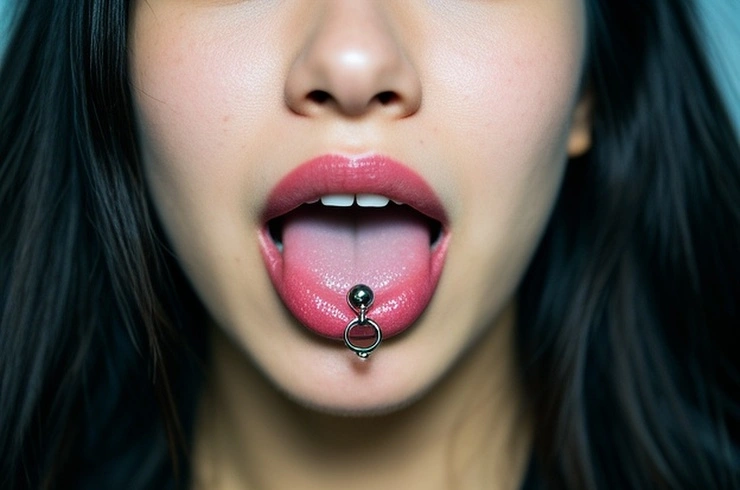
Oral piercings involve creating a small hole in areas like the tongue, lip, cheek, or uvula for jewelry. These can be intraoral (inside the mouth) or perioral (visible outside). Common types include tongue, lip, cheek, frenum, uvula, and smiley piercings, each named for its specific location.
While a popular form of self-expression, oral piercings carry substantial risks. The mouth's high bacterial content makes infections a significant concern. Swelling, particularly of the tongue, can impede breathing. For individuals with heart conditions, bacteria from the mouth can even lead to damage to heart valves. Bleeding and blood loss are also potential complications, especially with tongue piercings due to the rich blood supply in the area.
Beyond biological risks, the jewelry itself poses threats. It can break off, leading to choking hazards, or chip teeth during everyday activities like eating, sleeping, or talking. Severe tooth damage might necessitate a root canal or even tooth loss. Other potential issues include difficulty speaking, chewing, or swallowing, damage to gums or fillings, excessive drooling, and interference with dental X-rays. More serious health problems like gum disease, uncontrolled bleeding, chronic infections, hepatitis B and C, and allergic reactions to jewelry metals are also possibilities. The American Dental Association advises against oral piercings due to these risks, especially for individuals with certain pre-existing conditions like heart disease, diabetes, hemophilia, or autoimmune diseases, which can impair healing.
For those determined to get an oral piercing, safety precautions are paramount. Ensuring up-to-date vaccinations for hepatitis B and tetanus is crucial. Choosing a clean, well-run piercing shop with licensed piercers is essential. The piercer should practice strict hygiene, including hand washing, wearing fresh disposable gloves, and using sterilized or single-use tools. It's vital to confirm that the piercer is cooperative in answering questions, that shop employees are vaccinated against hepatitis B, that piercing guns are not used, and that a new, sealed needle is used for each piercing. Jewelry should be made of surgical steel, solid gold, or platinum to minimize adverse reactions.
Post-piercing care is critical for proper healing, which typically takes 3 to 4 weeks. During this period, rinse the piercing after every meal or snack and before bed with warm salt water or an alcohol-free antibacterial mouthwash. Avoid kissing and sharing eating utensils to prevent bacterial transmission. Consume small, healthy bites of food and steer clear of spicy, salty, or acidic foods and drinks, as well as hot beverages. While healing, the jewelry should be removable for short periods without the hole closing. Initially, tongue piercings often use a larger barbell to accommodate swelling; this should be replaced with a smaller one once swelling subsides to protect teeth. After complete healing, it's recommended to remove and brush the jewelry nightly, similar to brushing teeth, and to take it out before sleep or physical activity.
While minor pain, swelling, and increased saliva are common initial symptoms, be vigilant for signs of infection such as persistent redness, excessive swelling, significant bleeding, discharge, or a foul odor, and seek professional help if these occur.
Pro Tip
The content of the article is shared by netizens, please carefully identify it